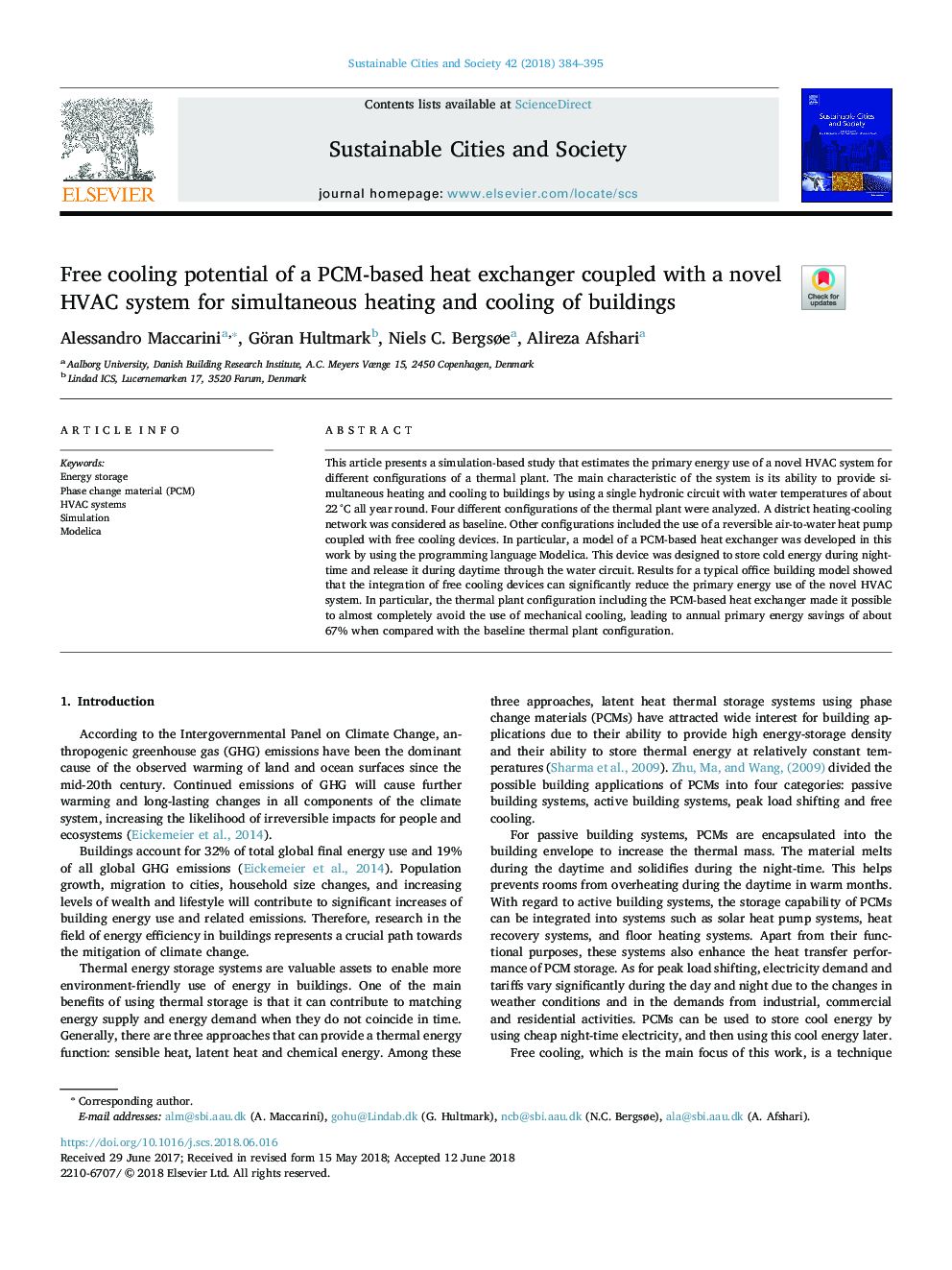| Article ID | Journal | Published Year | Pages | File Type |
|---|---|---|---|---|
| 11001286 | Sustainable Cities and Society | 2018 | 12 Pages |
Abstract
This article presents a simulation-based study that estimates the primary energy use of a novel HVAC system for different configurations of a thermal plant. The main characteristic of the system is its ability to provide simultaneous heating and cooling to buildings by using a single hydronic circuit with water temperatures of about 22â°C all year round. Four different configurations of the thermal plant were analyzed. A district heating-cooling network was considered as baseline. Other configurations included the use of a reversible air-to-water heat pump coupled with free cooling devices. In particular, a model of a PCM-based heat exchanger was developed in this work by using the programming language Modelica. This device was designed to store cold energy during night-time and release it during daytime through the water circuit. Results for a typical office building model showed that the integration of free cooling devices can significantly reduce the primary energy use of the novel HVAC system. In particular, the thermal plant configuration including the PCM-based heat exchanger made it possible to almost completely avoid the use of mechanical cooling, leading to annual primary energy savings of about 67% when compared with the baseline thermal plant configuration.
Related Topics
Physical Sciences and Engineering
Energy
Renewable Energy, Sustainability and the Environment
Authors
Alessandro Maccarini, Göran Hultmark, Niels C. Bergsøe, Alireza Afshari,
